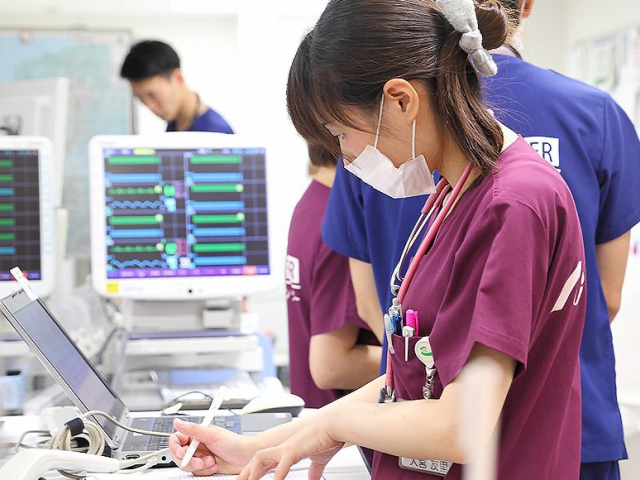South Korea
South Korea is ranked first in this list. The Asian country owes the medical sector advanced to its technological progress. It is mirrored in the use of efficient robotic systems in all surgical fields. South Korea is a leader in plastic surgery, cardiovascular treatment, and oncology. The country’s medical achievements are remarkable, as evidenced by the international certification of various medical fields. Most medical institutions in South Korea operate commercially, providing paid services. According to experts, the level of medicine in this Asian country has reached incredible heights, including the equipment in both public and private clinics and the training of specialists. Thanks to the national health insurance system, medical services are affordable to the entire population. Both locals and long-term foreign residents can get insured here. The insurance premium amount depends on income. So, patients commonly pay between 10% and 40% of their treatment costs.
Japan
Japan is considered the second country with a high level of medical care. It boasts one of the best healthcare systems in the world and a high life expectancy for its citizens. Japan is also noted for its wise healthcare system development. This sector in Japan is well-funded, with local medical centers utilizing modern equipment. Analysts report that Japan has the highest per capita number of CT and MRI machines. Japan is also home to pharmaceutical giants Astellas Pharma and Takeda Pharma, among the most advanced globally. Citizens receive quality care in public medical institutions. Insurance can cover up to 90% of medical services. Japan is acknowledged to be a country of long-livers thanks to one of the most progressive healthcare systems in the world. All Japanese citizens participate in a universal effective health insurance system, paying only 10%–30% of treatment costs, depending on age and income.
Denmark
Denmark ranks third on this list, with a highly developed network of hospitals and clinics, as well as robust medical infrastructure. Denmark places special emphasis on preventive measures, developing effective schemes to prevent infectious and other diseases. Danes enjoy free healthcare under insurance. Besides, emergency services are available to everyone at no cost. The country's medical care involves patients being assigned to family doctors who refer them to specialists if needed. All citizens are provided with free healthcare funded by taxes. State-level control is imposed over medical services, supplemented by regional and municipal oversight. Every resident is assigned to a general practitioner who provides referrals to other specialists if necessary. All citizens have access to a voluntary health insurance policy (VHI), covering all services except dental care.
Netherlands
The Netherlands holds fourth place, with one of the best healthcare systems in the world. The country has a strong pharmaceutical base, with healthcare spending accounting for 10% of GDP. The Netherlands is home to globally recognized research institutes like Philips Research, Eindhoven, and Danone Nederland BV. Citizens must register with the state insurance system to access all medical services. All residents have basic insurance and must pay insurance premiums (monthly or annually). Notably, the government invests substantial funds in the healthcare system annually. Interestingly, Dutch doctors are fluent in English, making it easier for foreigners to receive medical services.
Austria
Austria rounds out the top five countries with advanced medical services, hosting one of Europe's leading scientific centers—the Austrian Academy of Sciences. The achievements of scientists significantly boost the development of national medicine. Founded in 1847, the Austrian Academy of Sciences has amassed significant potential. Austrian doctors excel in treating various injuries (cranial, spinal, etc.). Each regional center has a university clinic, and Austria actively participates in global research projects. A lot of medical breakthroughs have been made by Austrian specialists. Medical institutions here are equipped with cutting-edge scientific and technical equipment. The quality of medical services depends on the type of insurance—social or private. Every resident has social insurance and can use public services. Patients without insurance must pay for medical services. No wonder, the cost of treatment in Austria is very high.
-
Grand Choice
Contest by
InstaForexInstaForex always strives to help you
fulfill your biggest dreams.JOIN CONTEST -
Chancy DepositDeposit your account with $3,000 and get $5000 more!
In November we raffle $5000 within the Chancy Deposit campaign!
Get a chance to win by depositing $3,000 to a trading account. Having fulfilled this condition, you become a campaign participant.JOIN CONTEST -
Trade Wise, Win DeviceTop up your account with at least $500, sign up for the contest, and get a chance to win mobile devices.JOIN CONTEST







 391
391 5
5







